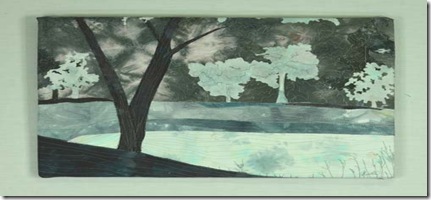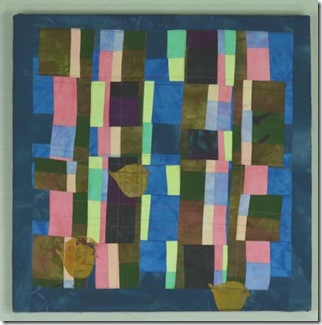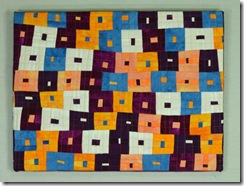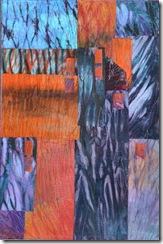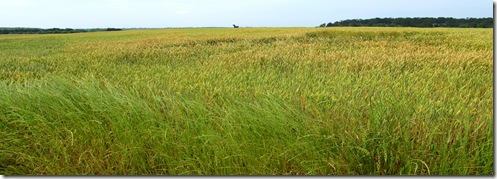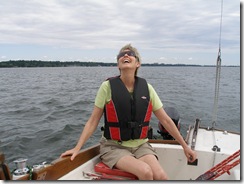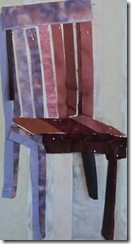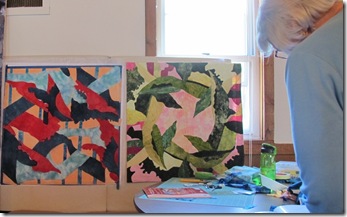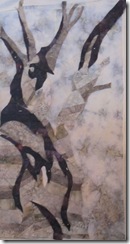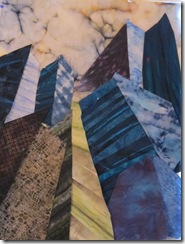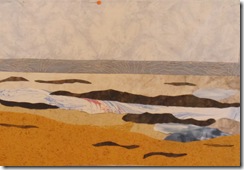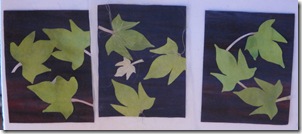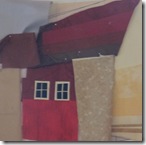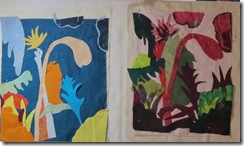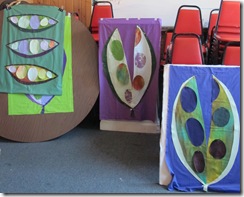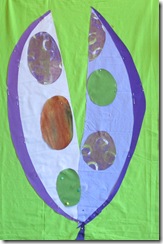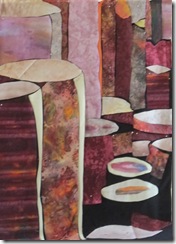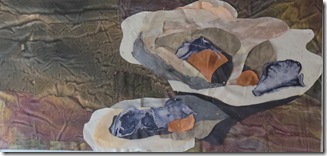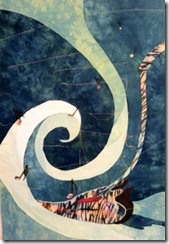Silvery Pond
Having two art shows/sales coming up it’s been fun to switch from oh so serious (and secretive! Glad to get out from under the wraps! ) work for QN to some much more light hearted or experimental pieces. Since generally only small pieces sell, it’s a good opportunity to try a lot of different things without investing too much time in any one idea.
Goldfish
I also wanted to try stretching work - I have liked the look of stretched textiles for a long time ever since I saw Joy Saville’s amazing work many years ago. She has a most elaborate stretching system that can be totally taken to bits and folded up for shipping – it’s truly wonderful, but I’m sure expensive and complicated. Even the explanation of how it worked had me confabulated! So, I’ve just been buying standard artist stretcher bars – they used to be obtainable everywhere but now I find I’m having to get them online. Don’t know what this tells us about contemporary painters! Maybe they are buying pre stretched, primed canvases rather than producing their own. Which of course limits you to the sizes the manufacturers choose to produce and is the first problem I ran into. I’ve always hated those competitions where you had to produce a quilt of certain dimensions and now I know why!! I find it next to impossible to do this. 
On The Line
But there are other problems to solve when stretching pieces too. If you use a thick batt, it makes it far too thick for folding over on the corners. Using no batt at all reduces the texture and the substance of the piece dramatically – 3 layers is better than two! And two is better than one! So I’ve experimented with different kinds of batting: thin cotton, wool, split wool and flannel. Also I’ve explored reduced the size of the batt so that it just reaches the first “turn” (as it were) on the frame. I’ve tried hand stitching through the layers and machine stitching. I also tried with and without borders, piecing versus appliqué, and adding on extra elements once the piece is stretched.
Spuggies
The benefit of small pieces is that you can take the time to experiment in all these different ways and find out what is right for you. The variety of things you can do is vast, but it’s possible to try out many of them and immediately and easily hang the pieces on the wall to see what works best as a finished piece. The other benefit is that nearly everyone I know cannot afford a full sized art quilt. We all know the hours that go into making them, consequently even if you limit yourself to minimum wage you’re up into several hundreds before you’ve barely started piecing, let alone quilting! And yet ordinary folks are more likely to want to buy textile art than major monied art collectors…and, of course, there are a lot more of them!
So here are a few of the pieces I’ve been working on, not sure how to price them yet but will do my best to make them reasonable.
City Life
And two unstretched small arashi pieces:
Arashi Squares
Arashi city
And now to sit back and cogitate a little!
If you have been, thanks for reading!
All comments most welcome!
Elizabeth
